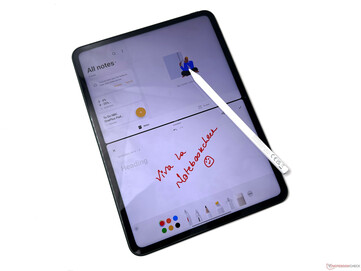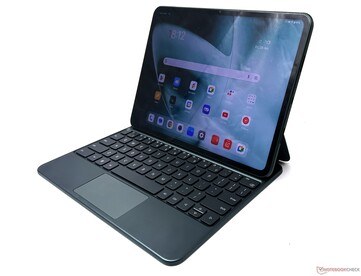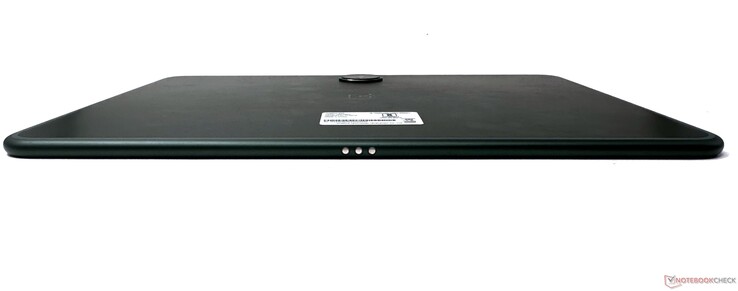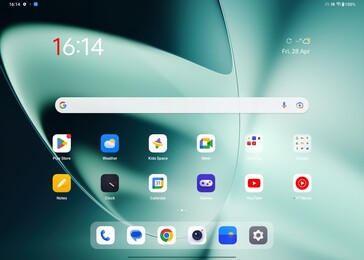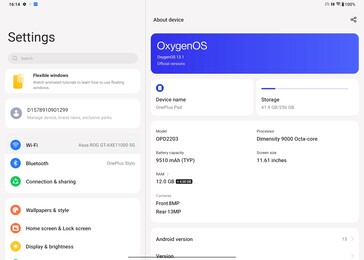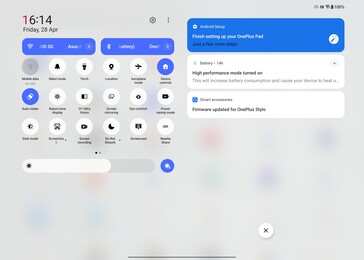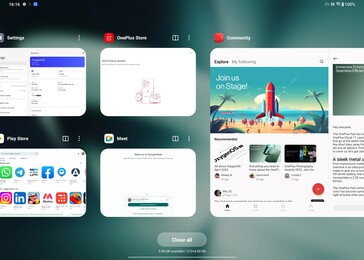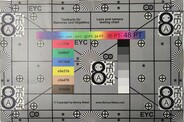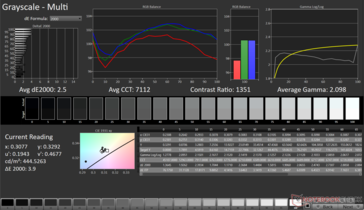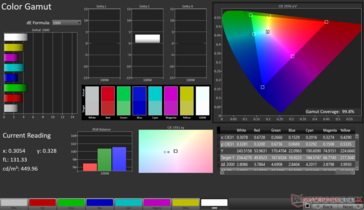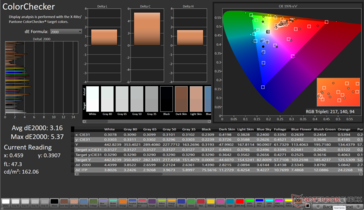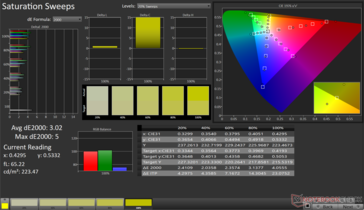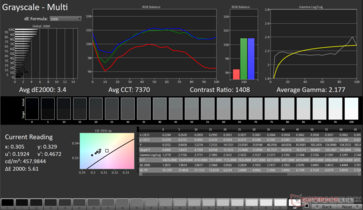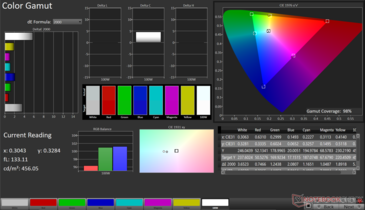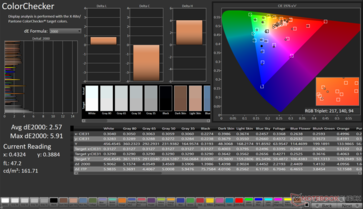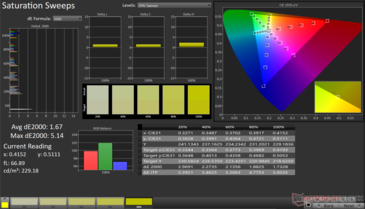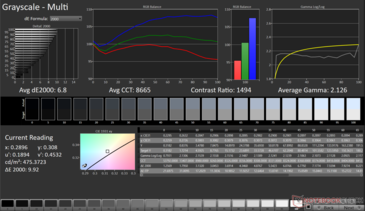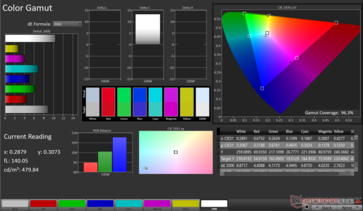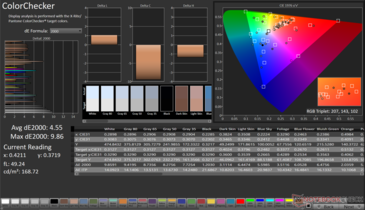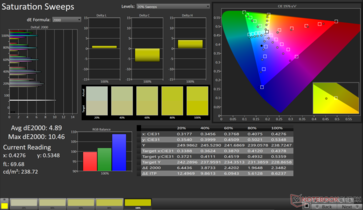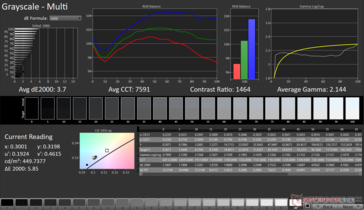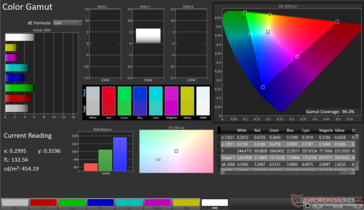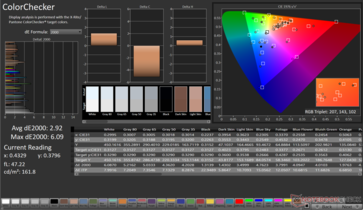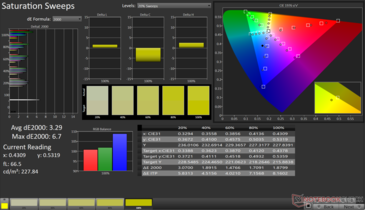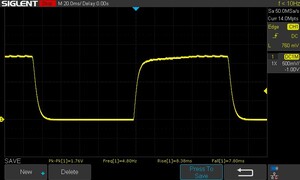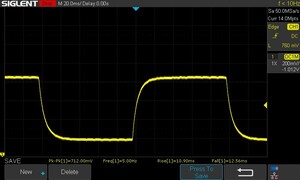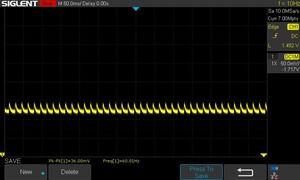OnePlus Pad Review: Tablet klasy premium Android, który nie obciąża portfela
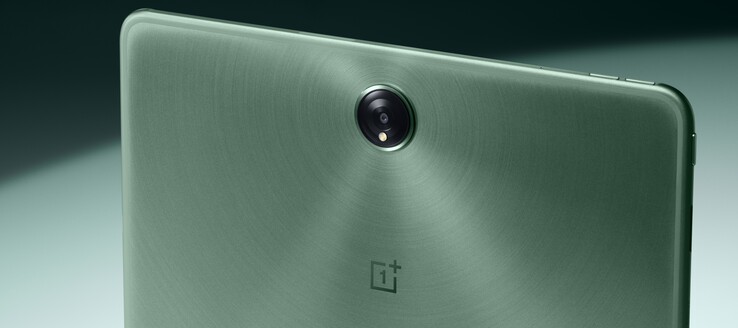
Uwaga: To jest recenzja na żywo i będzie aktualizowana o bieżące pomiary i testy wydajności.
OnePlus zaprezentował swój pierwszy tablet, tj.OnePlus Padpodczas imprezy Cloud 11, która odbyła się w lutym, było dla wielu miłym zaskoczeniem. Tylko garstka producentów OEM nadal inwestuje w rozwój nowych Android tabletów każdego roku z większością producentów, którzy scedowali terytorium na Apple iPadów.
OnePlus Pad jest napędzany przez MediaTek Dimensity 9000 SoC i posiada wyświetlacz 7:5 2000 x 2800 144 Hz. Pad występuje zarówno w wariantach 8 GB/128 GB, jak i 12 GB/256 GB. W ofercie znajduje się kilka opcjonalnych akcesoriów, w tym klawiatura magnetyczna, OnePlus Stylo oraz etui OnePlus Folio.
Mamy ze sobą wariant OnePlus Pad z 12 GB LPDDR5 RAM i 256 GB pamięci masowej UFS 3.1. Ten wariant sprzedaje się za ₹39,999 (489 USD) w Indiach i jest objęty roczną gwarancją.
OnePlus stawia sobie za cel dostarczenie tabletu klasy premium w rozsądnej cenie. W tej recenzji oceniamy, czy rzeczywiście tak jest.
Potencjalni konkurenci w porównaniu
Ocena | Data | Model | Waga | Wysokość | Rozmiar | Rezolucja | Cena |
|---|---|---|---|---|---|---|---|
| 89.3 % v7 (old) | 04/2023 | OnePlus Pad Dimensity 9000, Mali-G710 MP10 | 552 g | 6.5 mm | 11.61" | 2800x2000 | |
| 82.4 % v7 (old) | 04/2023 | Lenovo Tab P11 (Gen 2) Helio G99, Mali-G57 MP2 | 520 g | 7.4 mm | 11.50" | 2000x1200 | |
| 88.3 % v7 (old) | Samsung Galaxy Tab S8+ 5G SD 8 Gen 1, Adreno 730 | 572 g | 5.7 mm | 12.40" | 2800x1752 | ||
| 88.8 % v7 (old) | 03/2023 | Samsung Galaxy Tab S8 Ultra SD 8 Gen 1, Adreno 730 | 726 g | 5.5 mm | 14.60" | 2960x1848 | |
| 91.8 % v7 (old) | 11/2022 | Apple iPad Pro 12.9 2022 M2, M2 10-Core GPU | 682 g | 6.4 mm | 12.90" | 2732x2048 | |
| 84.6 % v7 (old) | 12/2022 | Xiaomi Redmi Pad Helio G99, Mali-G57 MP2 | 445 g | 7.05 mm | 10.61" | 2000x1200 | |
| 88.6 % v7 (old) | 11/2022 | Apple iPad 10 A14, A14 Bionic GPU | 477 g | 7 mm | 10.90" | 2360x1640 | |
| 83.1 % v7 (old) | 01/2023 | Oppo Pad Air SD 680, Adreno 610 | 440 g | 6.9 mm | 10.36" | 2000x1200 | |
| 91.7 % v7 (old) | 10/2024 | Apple iPad Air 5 2022 M1, M1 8-Core GPU | 461 g | 6.1 mm | 10.90" | 2360x1640 |
Obudowa: Premium sleek unibody construction
OnePlus Pad posiada szklany front, który jest umieszczony w aluminiowej konstrukcji unibody. Pad jest dostępny tylko w opcji kolorystycznej Halo Green, która oznacza witalność i życie według firmy.
Przy grubości 6,5 mm, Pad wydaje się być całkiem zgrabny, ale Samsung Galaxy Tab S8 Ultra zdobywa nagrodę za bycie najsmuklejszym z całej grupy.
OnePlus Pad jest jednak znacznie lżejszy od flagowego tabletu Samsunga, ważąc nieco ponad pół kilograma. Mimo mniejszej wagi ogólnej, tablet pewnie i stabilnie leży w dłoni.
Szkło wyświetlacza przylega do ramki, a zaokrąglone krawędzie 2.5D nadają całości elegancki wygląd.
OnePlusowi udało się utrzymać grubość ramki na niskim poziomie 6,7 mm ze względu na ergonomię, jednocześnie oferując imponujący współczynnik screen-to-body ratio na poziomie 88,14%. Firma nie reklamuje żadnej formy ochrony ekranu przez Gorilla Glass.
Ogólnie rzecz biorąc, konstrukcja OnePlus Pad jest dość solidna i nie znaleźliśmy żadnych zauważalnych problemów z wyginaniem się obudowy.
Sprzęt: Cztery głośniki z Dolby Atmos
Minimalizm podkładki przejawia się także w wyborze portów. Zasadniczo otrzymujesz tylko jeden port USB Typu-C na dole dla wszystkich potrzeb łączności.
Obsługa OTG jest dostępna, ale OnePlus nie określił dokładnie standardu USB, który został tu użyty. Ale jeśli OnePlus 11 jest cokolwiek, aby przejść, Pad jest również prawdopodobne, aby zrobić zrobić z tylko USB 2.0 prędkości.
Lewa strona tabletu jest w dużej mierze czysta, z wyjątkiem potrójnych pinów, które mocują akcesoria, takie jak klawiatura magnetyczna. W kierunku prawej strony otrzymujemy magnetyczny obszar do zatrzaskiwania OnePlus Stylo i dźwigni głośności.
Na górze i dole tabletu znajduje się po parze głośników. Ta czterogłośnikowa konfiguracja jest certyfikowana dla Dolby Atmos. Na ramce znajdują się dwa mikrofoniki - jeden obok portu Type-C, a drugi w pobliżu rakietek głośności.
Z tyłu mieści się 13 MP aparat, który jest wyśrodkowany dla symetrii. Ustawienie pomaga przede wszystkim przy ujęciach krajobrazowych. 8 MP kamerka selfie jest umieszczona niepozornie w wyświetlaczu.
Oprogramowanie: OxygenOS 13.1 z trzyletnimi aktualizacjami funkcji
OnePlus Pad jest preinstalowany z OxygenOS 13.1 opartym na Android 13 z najnowszymi poprawkami bezpieczeństwa datowanymi na 5 marca 2023.
OnePlus otrzymał flak za przeniesienie swojej bazy kodowej z oryginalnego OxygenOS do tej opartej na Oppo's ColorOS, ale Pad pochodzi bez bloatware. Jedyne preinstalowane aplikacje firm trzecich to Netflix i WPS Office. Dostępna jest certyfikacja Widevine na poziomie L1 dla streamingu w wysokiej rozdzielczości chronionej DRM.
OxygenOS 13.1 na OnePlus Pad jest wyposażony w kilka gestów, które umożliwiają efektywną wielozadaniowość. Pad został zaprojektowany tak, aby pasował do większego ekosystemu OnePlus, który umożliwia kilka funkcji jakości życia, w tym udostępnianie danych komórkowych 5G z pobliskimi telefonami OnePlus, OTP w podróży, automatyczne łączenie i współdzielenie ekranu między Padem a telefonem OnePlus oraz zdalne sterowanie telewizorami OnePlus za pomocą aplikacji OnePlus Connect.
Według OnePlus, te funkcje ekosystemu będą rozwijane za pośrednictwem aktualizacji OTA w nadchodzących miesiącach. Funkcja automatycznego połączenia z telefonem OnePlus nie pojawi się w Europie, więc ci użytkownicy będą musieli za każdym razem łączyć się ręcznie.
OnePlus obiecuje trzy lata aktualizacji funkcji i cztery lata łatek bezpieczeństwa dla Pada. Jest to podobne do OnePlus 11R i w przeciwieństwie do OnePlus 11, który oferuje dodatkowy rok wsparcia oprogramowania.
Komunikacja: Stabilna, wysoka przepustowość Wi-Fi
OnePlus Pad nie obsługuje łączności komórkowej ani najnowszego standardu Wi-Fi 6E. Jednak w testach z naszym referencyjnym routerem Asus ROG Rapture GT-AXE11000, Padowi udaje się zająć pierwsze miejsce w rankingu przepustowości Wi-Fi 6.
| Networking / iperf3 transmit AXE11000 | |
| OnePlus Pad | |
| Apple iPad Air 5 2022 | |
| Samsung Galaxy Tab S8 Ultra | |
| Samsung Galaxy Tab S8+ 5G | |
| Przeciętny 802.11 a/b/g/n/ac/ax (295 - 1757, n=161) | |
| Apple iPad 10 | |
| Średnia w klasie Tablet (10.5 - 1801, n=84, ostatnie 2 lata) | |
| Lenovo Tab P11 (Gen 2) | |
| Apple iPad Pro 12.9 2022 | |
| Xiaomi Redmi Pad | |
| Oppo Pad Air | |
| Networking / iperf3 receive AXE11000 | |
| OnePlus Pad | |
| Samsung Galaxy Tab S8 Ultra | |
| Samsung Galaxy Tab S8+ 5G | |
| Przeciętny 802.11 a/b/g/n/ac/ax (234 - 1696, n=159) | |
| Apple iPad Air 5 2022 | |
| Apple iPad 10 | |
| Średnia w klasie Tablet (20.1 - 1857, n=84, ostatnie 2 lata) | |
| Apple iPad Pro 12.9 2022 | |
| Lenovo Tab P11 (Gen 2) | |
| Xiaomi Redmi Pad | |
| Oppo Pad Air | |
Aparaty: Dobre odwzorowanie kolorów z matrycy 13 MP
OnePlus Pad posiada pojedynczy aparat tylny 13 MP oraz lampę błyskową LED. Aparat obsługuje EIS i umożliwia nagrywanie wideo do 4K 30 fps.
W naszym teście ColorChecker Passport w idealnych warunkach oświetleniowych widzimy, że aparat jest w stanie dość dokładnie odtworzyć wszystkie kolory ze średnią deltą E wynoszącą około 6,47. Największe odchylenia widać w zieleni liści, błękicie nieba i ciemnych odcieniach kolorów skóry.
Na wykresie testowym widać dobrze rozwiązany obraz o dobrej ostrości i wyrazistości.
Wkrótce dodamy więcej przykładowych zdjęć i porównań.
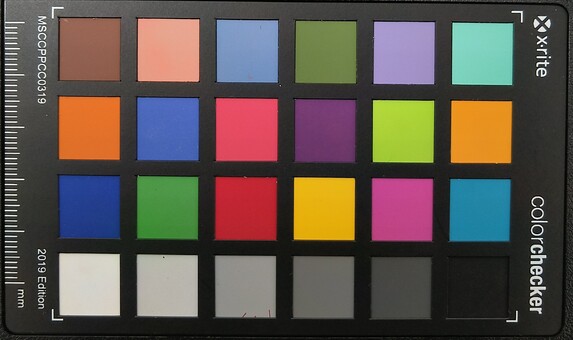
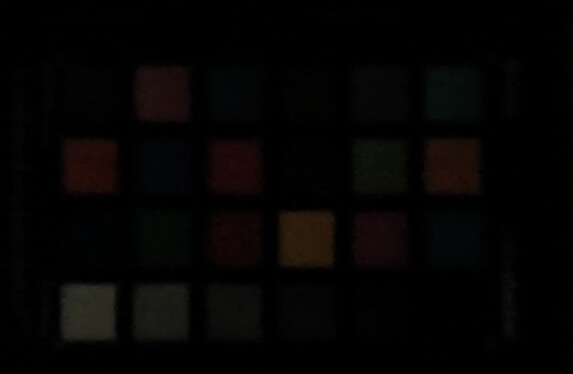
Akcesoria i gwarancja: Klawiatura magnetyczna i OnePlus Stylo oferowane opcjonalnie
W pudełku otrzymujemy ładowarkę SuperVOOC o mocy 100 W, która w rzeczywistości ładuje tablet z mocą 67 W, kabel USB Typ-A do Typ-C oraz zwykłe papiery.
OnePlus oferuje mnóstwo akcesoriów do tabletu. Do naszego egzemplarza recenzenckiego dołączona była klawiatura magnetyczna oraz pióro OnePlus Stylo, które w innym przypadku są osobnymi zakupami.
Według OnePlus, Magnetyczna klawiatura będzie ustawić cię z powrotem przez ₹7,999 (US$98), podczas gdy pióro Stylo będzie kosztować kolejny ₹4,999 (US$61). Etui folio bez klawiatury kosztuje ₹1,499 (US$18).
Osoby, które zamówią dziś tablet w przedsprzedaży, otrzymają adapter SuperVOOC o mocy 80 W oraz etui folio za darmo.
OnePlus Pad i akcesoria są objęte roczną ograniczoną gwarancją w Indiach.
Wyświetl
| |||||||||||||||||||||||||
rozświetlenie: 89 %
na akumulatorze: 474 cd/m²
kontrast: 1481:1 (czerń: 0.32 cd/m²)
ΔE ColorChecker Calman: 3.16 | ∀{0.5-29.43 Ø4.77}
ΔE Greyscale Calman: 2.5 | ∀{0.09-98 Ø5}
99.8% sRGB (Calman 2D)
Gamma: 2.09
CCT: 7112 K
| OnePlus Pad IPS, 2800x2000, 11.6" | Lenovo Tab P11 (Gen 2) IPS, 2000x1200, 11.5" | Samsung Galaxy Tab S8+ 5G Super AMOLED, 2800x1752, 12.4" | Samsung Galaxy Tab S8 Ultra Super AMOLED, 2960x1848, 14.6" | Apple iPad Pro 12.9 2022 Liquid Retina XDR Display, Mini-LED, 2732x2048, 12.9" | Xiaomi Redmi Pad IPS, 2000x1200, 10.6" | Apple iPad 10 Liquid Retina, IPS, 2360x1640, 10.9" | Oppo Pad Air IPS, 2000x1200, 10.4" | Apple iPad Air 5 2022 IPS, 2360x1640, 10.9" | |
|---|---|---|---|---|---|---|---|---|---|
| Response Times | -65% | 93% | 93% | -91% | -52% | -60% | -71% | -46% | |
| Response Time Grey 50% / Grey 80% * (ms) | 23.46 ? | 39.8 ? -70% | 1.383 ? 94% | 1.495 ? 94% | 35.3 ? -50% | 38.13 ? -63% | 42.68 ? -82% | 42.7 ? -82% | 24.9 ? -6% |
| Response Time Black / White * (ms) | 16.18 ? | 25.7 ? -59% | 1.318 ? 92% | 1.38 ? 91% | 37.53 ? -132% | 22.89 ? -41% | 22.31 ? -38% | 25.7 ? -59% | 30.1 ? -86% |
| PWM Frequency (Hz) | 60.01 ? | 245.4 | 250.8 | 6401 ? | |||||
| Screen | -41% | 1% | 19% | 28% | -4% | 3% | -47% | 16% | |
| Brightness middle (cd/m²) | 474 | 423 -11% | 459 -3% | 600 27% | 611 29% | 418 -12% | 467 -1% | 352 -26% | 529 12% |
| Brightness (cd/m²) | 447 | 396 -11% | 462 3% | 604 35% | 605 35% | 402 -10% | 468 5% | 339 -24% | 490 10% |
| Brightness Distribution (%) | 89 | 88 -1% | 97 9% | 96 8% | 92 3% | 90 1% | 92 3% | 85 -4% | 86 -3% |
| Black Level * (cd/m²) | 0.32 | 0.29 9% | 0.28 12% | 0.49 -53% | 0.45 -41% | 0.37 -16% | |||
| Contrast (:1) | 1481 | 1459 -1% | 1493 1% | 953 -36% | 782 -47% | 1430 -3% | |||
| Colorchecker dE 2000 * | 3.16 | 5.32 -68% | 2.2 30% | 2.7 15% | 1.4 56% | 2.3 27% | 1.4 56% | 4.79 -52% | 1.35 57% |
| Colorchecker dE 2000 max. * | 5.37 | 9.87 -84% | 4.9 9% | 5.3 1% | 3.3 39% | 5.4 -1% | 3.3 39% | 8.65 -61% | 2.45 54% |
| Greyscale dE 2000 * | 2.5 | 6.6 -164% | 3.6 -44% | 1.8 28% | 2.3 8% | 3.7 -48% | 2.3 8% | 5.5 -120% | 2.1 16% |
| Gamma | 2.09 105% | 2.159 102% | 2.09 105% | 2.09 105% | 2.22 99% | 2.21 100% | 2.21 100% | 2.118 104% | 2.183 101% |
| CCT | 7112 91% | 7979 81% | 6558 99% | 6461 101% | 6930 94% | 6595 99% | 6852 95% | 7889 82% | 6939 94% |
| Całkowita średnia (program / ustawienia) | -53% /
-46% | 47% /
24% | 56% /
37% | -32% /
-2% | -28% /
-13% | -29% /
-10% | -59% /
-52% | -15% /
4% |
* ... im mniej tym lepiej
Tryb rzeczywisty z domyślną temperaturą barwową (docelowa przestrzeń barw: sRGB)
OnePlus oferuje trzy tryby kolorów dla podkładki viz. Vivd, Natural i Real. W naszych testach z użyciem spektrofotometru X-Rite i1Basic Pro 3 i oprogramowania Calman Ultimate do kalibracji kolorów firmy Portrait Displays, stwierdziliśmy, że profil kolorów Real oferuje najlepszą dokładność kolorów i najwyższe pokrycie gamy kolorów sRGB.
Tryb naturalny z domyślną temperaturą barwową (docelowa przestrzeń barw: sRGB)
Tryb naturalny jest bardzo podobny do trybu Real, ale tutaj widzimy wzrost dE2000 w skali szarości. Kolory wykazują jednak znacznie mniejsze odchylenia.
Tryb Vivid z domyślną temperaturą barwową (docelowa przestrzeń barw: DCI-P3)
Vivid pokrywa 96,3% przestrzeni barw DCI-P3, ale widzimy wysokie odchylenia w skali szarości i ColorChecker. Subiektywnie użytkownicy będą jednak preferować to ustawienie, gdyż kolory wydają się dużo bardziej wyraziste.
Tryb Vivid z ciepłą temperaturą barwową (docelowa przestrzeń barw: DCI-P3)
Dokładność kolorów w trybie Vivid można poprawić poprzez zwiększenie temperatury barwowej. Powoduje to zauważalną poprawę wartości w skali szarości i ColorChecker dE2000.
Wyświetl czasy reakcji
| ↔ Czas reakcji od czerni do bieli | ||
|---|---|---|
| 16.18 ms ... wzrost ↗ i spadek ↘ łącznie | ↗ 8.38 ms wzrost | |
| ↘ 7.8 ms upadek | ||
| W naszych testach ekran wykazuje dobry współczynnik reakcji, ale może być zbyt wolny dla graczy rywalizujących ze sobą. Dla porównania, wszystkie testowane urządzenia wahają się od 0.1 (minimum) do 240 (maksimum) ms. » 37 % wszystkich urządzeń jest lepszych. Oznacza to, że zmierzony czas reakcji jest lepszy od średniej wszystkich testowanych urządzeń (20.2 ms). | ||
| ↔ Czas reakcji 50% szarości do 80% szarości | ||
| 23.46 ms ... wzrost ↗ i spadek ↘ łącznie | ↗ 10.9 ms wzrost | |
| ↘ 12.56 ms upadek | ||
| W naszych testach ekran wykazuje dobry współczynnik reakcji, ale może być zbyt wolny dla graczy rywalizujących ze sobą. Dla porównania, wszystkie testowane urządzenia wahają się od 0.165 (minimum) do 636 (maksimum) ms. » 33 % wszystkich urządzeń jest lepszych. Oznacza to, że zmierzony czas reakcji jest lepszy od średniej wszystkich testowanych urządzeń (31.6 ms). | ||
Migotanie ekranu / PWM (modulacja szerokości impulsu)
| Wykryto migotanie ekranu/wykryto PWM | 60.01 Hz | ≤ 100 % ustawienia jasności | |
Podświetlenie wyświetlacza miga z częstotliwością 60.01 Hz (najgorszy przypadek, np. przy użyciu PWM) Wykryto migotanie przy ustawieniu jasności 100 % i poniżej. Powyżej tego ustawienia jasności nie powinno być żadnego migotania ani PWM. Częstotliwość 60.01 Hz jest bardzo niska, więc migotanie może powodować zmęczenie oczu i bóle głowy po dłuższym użytkowaniu. Dla porównania: 53 % wszystkich testowanych urządzeń nie używa PWM do przyciemniania wyświetlacza. Jeśli wykryto PWM, zmierzono średnio 8083 (minimum: 5 - maksimum: 343500) Hz. | |||
Wydajność
| Geekbench 6.0 | |
| Single-Core | |
| OnePlus Pad | |
| Przeciętny MediaTek Dimensity 9000 (1599 - 1663, n=2) | |
| Lenovo Tab P11 (Gen 2) | |
| Multi-Core | |
| Przeciętny MediaTek Dimensity 9000 (4130 - 4445, n=2) | |
| OnePlus Pad | |
| Lenovo Tab P11 (Gen 2) | |
| PCMark for Android - Work 3.0 | |
| OnePlus Pad | |
| Przeciętny MediaTek Dimensity 9000 (13407 - 17573, n=4) | |
| Samsung Galaxy Tab S8 Ultra | |
| Samsung Galaxy Tab S8+ 5G | |
| Średnia w klasie Tablet (5749 - 27428, n=73, ostatnie 2 lata) | |
| Lenovo Tab P11 (Gen 2) | |
| Xiaomi Redmi Pad | |
| Oppo Pad Air | |
| UL Procyon AI Inference for Android - Overall Score NNAPI | |
| Samsung Galaxy Tab S8 Ultra | |
| OnePlus Pad | |
| Przeciętny MediaTek Dimensity 9000 (29236 - 30392, n=3) | |
| Średnia w klasie Tablet (2597 - 76852, n=61, ostatnie 2 lata) | |
| Lenovo Tab P11 (Gen 2) | |
| Xiaomi Redmi Pad | |
| AImark - Score v3.x | |
| Przeciętny MediaTek Dimensity 9000 (27367 - 28688, n=2) | |
| OnePlus Pad | |
| Średnia w klasie Tablet (153 - 55794, n=50, ostatnie 2 lata) | |
| Xiaomi Redmi Pad | |
| Lenovo Tab P11 (Gen 2) | |
GFXBench (DX / GLBenchmark) 2.7: T-Rex Onscreen | 1920x1080 T-Rex Offscreen
GFXBench 3.0: on screen Manhattan Onscreen OGL | 1920x1080 1080p Manhattan Offscreen
GFXBench 3.1: on screen Manhattan ES 3.1 Onscreen | 1920x1080 Manhattan ES 3.1 Offscreen
GFXBench: on screen Car Chase Onscreen | 1920x1080 Car Chase Offscreen | on screen Aztec Ruins High Tier Onscreen | 2560x1440 Aztec Ruins High Tier Offscreen | on screen Aztec Ruins Normal Tier Onscreen | 1920x1080 Aztec Ruins Normal Tier Offscreen | 3840x2160 4K Aztec Ruins High Tier Offscreen
| 3DMark / Wild Life Extreme Unlimited | |
| Apple iPad Pro 12.9 2022 | |
| Apple iPad Air 5 2022 | |
| Samsung Galaxy Tab S8+ 5G | |
| Samsung Galaxy Tab S8 Ultra | |
| OnePlus Pad | |
| Apple iPad 10 | |
| Lenovo Tab P11 (Gen 2) | |
| Xiaomi Redmi Pad | |
| Oppo Pad Air | |
| 3DMark / Wild Life Extreme | |
| Apple iPad Pro 12.9 2022 | |
| Apple iPad Air 5 2022 | |
| Samsung Galaxy Tab S8+ 5G | |
| OnePlus Pad | |
| Samsung Galaxy Tab S8 Ultra | |
| Apple iPad 10 | |
| Xiaomi Redmi Pad | |
| Lenovo Tab P11 (Gen 2) | |
| Oppo Pad Air | |
| 3DMark / Wild Life Unlimited Score | |
| Apple iPad Pro 12.9 2022 | |
| Apple iPad Air 5 2022 | |
| Samsung Galaxy Tab S8 Ultra | |
| Samsung Galaxy Tab S8+ 5G | |
| Apple iPad 10 | |
| OnePlus Pad | |
| Xiaomi Redmi Pad | |
| Lenovo Tab P11 (Gen 2) | |
| Oppo Pad Air | |
| 3DMark / Sling Shot Extreme (ES 3.1) Unlimited Physics | |
| OnePlus Pad | |
| Samsung Galaxy Tab S8+ 5G | |
| Xiaomi Redmi Pad | |
| Samsung Galaxy Tab S8 Ultra | |
| Oppo Pad Air | |
| 3DMark / Sling Shot Extreme (ES 3.1) Unlimited Graphics | |
| Samsung Galaxy Tab S8 Ultra | |
| Samsung Galaxy Tab S8+ 5G | |
| OnePlus Pad | |
| Xiaomi Redmi Pad | |
| Oppo Pad Air | |
| 3DMark / Sling Shot Extreme (ES 3.1) Unlimited | |
| OnePlus Pad | |
| Samsung Galaxy Tab S8 Ultra | |
| Samsung Galaxy Tab S8+ 5G | |
| Xiaomi Redmi Pad | |
| Oppo Pad Air | |
| 3DMark / Sling Shot Extreme (ES 3.1) | |
| Xiaomi Redmi Pad | |
| Oppo Pad Air | |
| 3DMark / Sling Shot Extreme (ES 3.1) Graphics | |
| Xiaomi Redmi Pad | |
| Oppo Pad Air | |
| 3DMark / Sling Shot Extreme (ES 3.1) Physics | |
| Xiaomi Redmi Pad | |
| Oppo Pad Air | |
| GFXBench (DX / GLBenchmark) 2.7 / T-Rex Onscreen | |
| Samsung Galaxy Tab S8 Ultra | |
| Apple iPad Pro 12.9 2022 | |
| Samsung Galaxy Tab S8+ 5G | |
| Apple iPad Air 5 2022 | |
| Apple iPad 10 | |
| OnePlus Pad | |
| Lenovo Tab P11 (Gen 2) | |
| Xiaomi Redmi Pad | |
| GFXBench (DX / GLBenchmark) 2.7 / T-Rex Offscreen | |
| Apple iPad Pro 12.9 2022 | |
| Apple iPad Air 5 2022 | |
| Samsung Galaxy Tab S8+ 5G | |
| Apple iPad 10 | |
| Samsung Galaxy Tab S8 Ultra | |
| OnePlus Pad | |
| Lenovo Tab P11 (Gen 2) | |
| Xiaomi Redmi Pad | |
| GFXBench 3.0 / Manhattan Onscreen OGL | |
| Apple iPad Pro 12.9 2022 | |
| Samsung Galaxy Tab S8+ 5G | |
| Samsung Galaxy Tab S8 Ultra | |
| Apple iPad Air 5 2022 | |
| Apple iPad 10 | |
| OnePlus Pad | |
| Lenovo Tab P11 (Gen 2) | |
| Xiaomi Redmi Pad | |
| GFXBench 3.0 / 1080p Manhattan Offscreen | |
| Apple iPad Pro 12.9 2022 | |
| Apple iPad Air 5 2022 | |
| OnePlus Pad | |
| Samsung Galaxy Tab S8 Ultra | |
| Apple iPad 10 | |
| Samsung Galaxy Tab S8+ 5G | |
| Xiaomi Redmi Pad | |
| Lenovo Tab P11 (Gen 2) | |
| GFXBench 3.1 / Manhattan ES 3.1 Onscreen | |
| Apple iPad Pro 12.9 2022 | |
| Apple iPad Air 5 2022 | |
| Samsung Galaxy Tab S8+ 5G | |
| Apple iPad 10 | |
| OnePlus Pad | |
| Samsung Galaxy Tab S8 Ultra | |
| Xiaomi Redmi Pad | |
| Lenovo Tab P11 (Gen 2) | |
| GFXBench 3.1 / Manhattan ES 3.1 Offscreen | |
| Apple iPad Pro 12.9 2022 | |
| Apple iPad Air 5 2022 | |
| OnePlus Pad | |
| Samsung Galaxy Tab S8+ 5G | |
| Apple iPad 10 | |
| Samsung Galaxy Tab S8 Ultra | |
| Xiaomi Redmi Pad | |
| Lenovo Tab P11 (Gen 2) | |
| GFXBench / Car Chase Onscreen | |
| Apple iPad Pro 12.9 2022 | |
| Apple iPad Air 5 2022 | |
| Apple iPad 10 | |
| Samsung Galaxy Tab S8+ 5G | |
| OnePlus Pad | |
| Samsung Galaxy Tab S8 Ultra | |
| Xiaomi Redmi Pad | |
| Lenovo Tab P11 (Gen 2) | |
| GFXBench / Car Chase Offscreen | |
| Apple iPad Pro 12.9 2022 | |
| Apple iPad Air 5 2022 | |
| Apple iPad 10 | |
| OnePlus Pad | |
| Samsung Galaxy Tab S8+ 5G | |
| Samsung Galaxy Tab S8 Ultra | |
| Xiaomi Redmi Pad | |
| Lenovo Tab P11 (Gen 2) | |
| GFXBench / Aztec Ruins High Tier Onscreen | |
| Apple iPad Pro 12.9 2022 | |
| Apple iPad Air 5 2022 | |
| Apple iPad 10 | |
| Samsung Galaxy Tab S8+ 5G | |
| Samsung Galaxy Tab S8 Ultra | |
| OnePlus Pad | |
| Lenovo Tab P11 (Gen 2) | |
| Xiaomi Redmi Pad | |
| Oppo Pad Air | |
| GFXBench / Aztec Ruins High Tier Offscreen | |
| Apple iPad Pro 12.9 2022 | |
| Apple iPad Air 5 2022 | |
| Samsung Galaxy Tab S8+ 5G | |
| OnePlus Pad | |
| Samsung Galaxy Tab S8 Ultra | |
| Apple iPad 10 | |
| Lenovo Tab P11 (Gen 2) | |
| Xiaomi Redmi Pad | |
| Oppo Pad Air | |
| GFXBench / Aztec Ruins Normal Tier Onscreen | |
| Apple iPad Pro 12.9 2022 | |
| Apple iPad Air 5 2022 | |
| Apple iPad 10 | |
| Samsung Galaxy Tab S8+ 5G | |
| Samsung Galaxy Tab S8 Ultra | |
| OnePlus Pad | |
| Lenovo Tab P11 (Gen 2) | |
| Xiaomi Redmi Pad | |
| Oppo Pad Air | |
| GFXBench / Aztec Ruins Normal Tier Offscreen | |
| Apple iPad Pro 12.9 2022 | |
| Apple iPad Air 5 2022 | |
| Apple iPad 10 | |
| OnePlus Pad | |
| Samsung Galaxy Tab S8+ 5G | |
| Samsung Galaxy Tab S8 Ultra | |
| Lenovo Tab P11 (Gen 2) | |
| Xiaomi Redmi Pad | |
| Oppo Pad Air | |
| GFXBench / 4K Aztec Ruins High Tier Offscreen | |
| Apple iPad Pro 12.9 2022 | |
| OnePlus Pad | |
| Apple iPad 10 | |
| Lenovo Tab P11 (Gen 2) | |
| Xiaomi Redmi Pad | |
| Oppo Pad Air | |
Basemark GPUScore
| Jetstream 2 - 2.0 Total Score | |
| Apple iPad Pro 12.9 2022 (Safari Mobile 16.1) | |
| Apple iPad Air 5 2022 (Safari 15) | |
| Apple iPad 10 (Safari Mobile 16.1) | |
| Średnia w klasie Tablet (23.3 - 395, n=68, ostatnie 2 lata) | |
| OnePlus Pad (Chrome 112) | |
| Przeciętny MediaTek Dimensity 9000 (127.2 - 148.6, n=3) | |
| Samsung Galaxy Tab S8 Ultra (Chrome 100) | |
| Samsung Galaxy Tab S8+ 5G (Samsung Browser V16) | |
| Lenovo Tab P11 (Gen 2) (Chrome 112) | |
| Xiaomi Redmi Pad (Chrome 107.0.5304.105) | |
| Speedometer 2.0 - Result 2.0 | |
| Apple iPad Pro 12.9 2022 (Safari Mobile 16.1) | |
| Apple iPad 10 (Safari Mobile 16.1) | |
| Apple iPad Air 5 2022 (Safari 15) | |
| Średnia w klasie Tablet (2.59 - 790, n=54, ostatnie 2 lata) | |
| Przeciętny MediaTek Dimensity 9000 (110 - 151, n=3) | |
| Samsung Galaxy Tab S8 Ultra (Chrome 100) | |
| OnePlus Pad (Chrome 112) | |
| Samsung Galaxy Tab S8+ 5G (Samsung Browser V16) | |
| Xiaomi Redmi Pad (Chrome 107.0.5304.105) | |
| Lenovo Tab P11 (Gen 2) (Chome 112) | |
| WebXPRT 4 - Overall | |
| Apple iPad Pro 12.9 2022 (Safari Mobile 16.1) | |
| OnePlus Pad (Chrome 112) | |
| Apple iPad 10 (Safari Mobile 16.1) | |
| Średnia w klasie Tablet (30 - 376, n=70, ostatnie 2 lata) | |
| Przeciętny MediaTek Dimensity 9000 (100 - 158, n=3) | |
| Lenovo Tab P11 (Gen 2) (Chrome 112) | |
| Xiaomi Redmi Pad (Chrome 107.0.5304.105) | |
| Octane V2 - Total Score | |
| Apple iPad Pro 12.9 2022 (Safari Mobile 16.1) | |
| Apple iPad Air 5 2022 (Safari 15) | |
| Apple iPad 10 (Safari Mobile 16.1) | |
| OnePlus Pad (Chrome 112) | |
| Przeciętny MediaTek Dimensity 9000 (47420 - 50714, n=3) | |
| Samsung Galaxy Tab S8 Ultra (Chrome 100) | |
| Średnia w klasie Tablet (763 - 138481, n=90, ostatnie 2 lata) | |
| Samsung Galaxy Tab S8+ 5G (Samsung Browser V16) | |
| Xiaomi Redmi Pad (Chrome 107.0.5304.105) | |
| Lenovo Tab P11 (Gen 2) (Chrome 112) | |
| Oppo Pad Air (Chrome 109) | |
| Mozilla Kraken 1.1 - Total | |
| Średnia w klasie Tablet (243 - 27101, n=79, ostatnie 2 lata) | |
| Xiaomi Redmi Pad (Chrome 107.0.5304.105) | |
| Lenovo Tab P11 (Gen 2) (Chrome 112) | |
| Samsung Galaxy Tab S8+ 5G (Samsung Browser V16) | |
| Przeciętny MediaTek Dimensity 9000 (798 - 1103, n=3) | |
| Samsung Galaxy Tab S8 Ultra (Chrome 100) | |
| OnePlus Pad (Chrome 112) | |
| Apple iPad 10 (Safari Mobile 16.1) | |
| Apple iPad Air 5 2022 (Safari 15) | |
| Apple iPad Pro 12.9 2022 (Safari Mobile 16.1) | |
* ... im mniej tym lepiej
| OnePlus Pad | Lenovo Tab P11 (Gen 2) | Samsung Galaxy Tab S8+ 5G | Samsung Galaxy Tab S8 Ultra | Apple iPad Pro 12.9 2022 | Xiaomi Redmi Pad | Apple iPad 10 | Oppo Pad Air | Apple iPad Air 5 2022 | Global Average -3 | Średnia w klasie Tablet | ||
|---|---|---|---|---|---|---|---|---|---|---|---|---|
| AndroBench 3-5 | -55% | -28% | -34% | -40% | -54% | -66% | -18% | |||||
| Sequential Read 256KB (MB/s) | 1866.48 | 822.4 -56% | 1726.34 -8% | 1817 -3% | 976.9 -48% | 921.6 -51% | 780 ? -58% | 1864 ? 0% | ||||
| Sequential Write 256KB (MB/s) | 1616.83 | 490.6 -70% | 1374.65 -15% | 451.6 -72% | 883.6 -45% | 717 -56% | 504 ? -69% | 1406 ? -13% | ||||
| Random Read 4KB (MB/s) | 341.39 | 204.8 -40% | 202.35 -41% | 238 -30% | 250.82 -27% | 177.1 -48% | 123.6 ? -64% | 254 ? -26% | ||||
| Random Write 4KB (MB/s) | 420.93 | 201.3 -52% | 218.02 -48% | 284.9 -32% | 257.02 -39% | 172.8 -59% | 117.8 ? -72% | 289 ? -31% |
Przezroczystość
Wyboru urządzeń do recenzji dokonuje nasza redakcja. Próbka testowa została udostępniona autorowi jako pożyczka od producenta lub sprzedawcy detalicznego na potrzeby tej recenzji. Pożyczkodawca nie miał wpływu na tę recenzję, producent nie otrzymał też kopii tej recenzji przed publikacją. Nie było obowiązku publikowania tej recenzji. Jako niezależna firma medialna, Notebookcheck nie podlega władzy producentów, sprzedawców detalicznych ani wydawców.
Tak testuje Notebookcheck
Każdego roku Notebookcheck niezależnie sprawdza setki laptopów i smartfonów, stosując standardowe procedury, aby zapewnić porównywalność wszystkich wyników. Od około 20 lat stale rozwijamy nasze metody badawcze, ustanawiając przy tym standardy branżowe. W naszych laboratoriach testowych doświadczeni technicy i redaktorzy korzystają z wysokiej jakości sprzętu pomiarowego. Testy te obejmują wieloetapowy proces walidacji. Nasz kompleksowy system ocen opiera się na setkach uzasadnionych pomiarów i benchmarków, co pozwala zachować obiektywizm.

